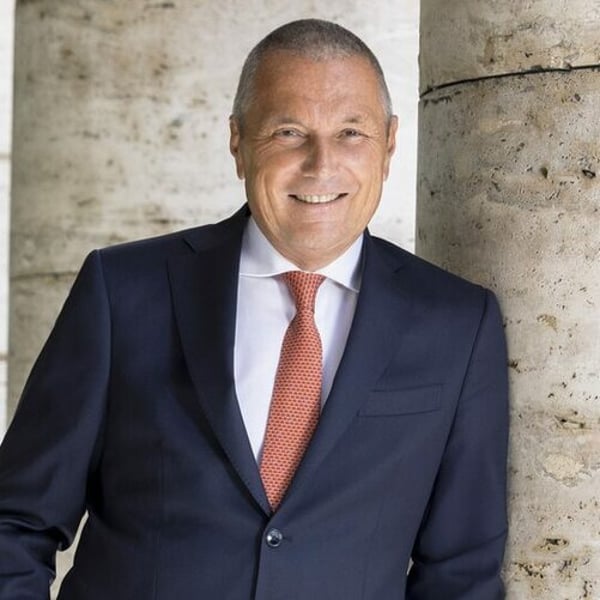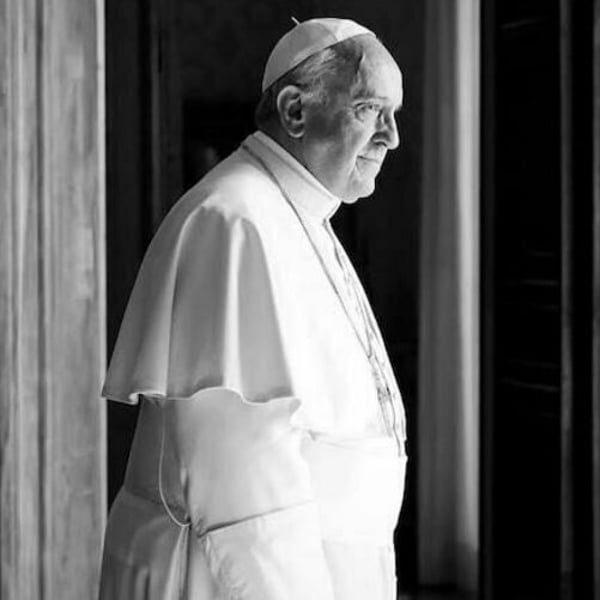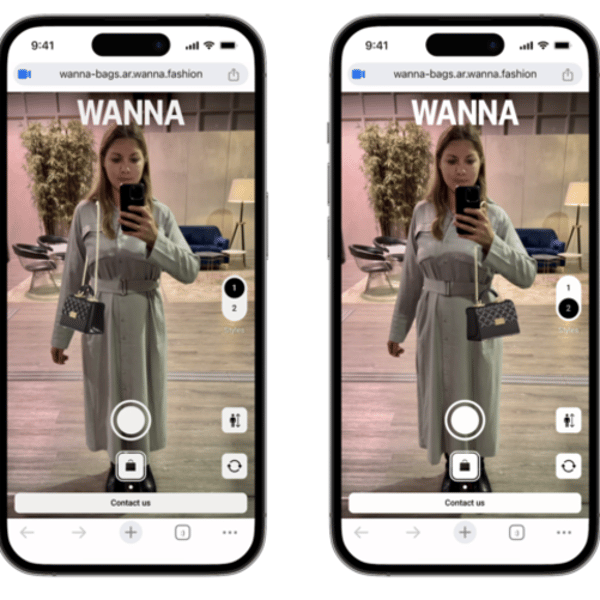Translated by
Nazia BIBI KEENOO
Published
April 22, 2025
Nothing seems to slow down Bulgari’s chief executive, Jean-Christophe Babin, who has just assumed leadership of the Watches division at LVMH. Under his direction, the Roman house inaugurated on April 16 the world’s largest jewelry manufacturing facility in Valenza, located in the Piedmont region of northern Italy. FashionNetwork.com spoke with the CEO about Bulgari’s growth strategy, market outlook and an ambitious new project in Rome.

FashionNetwork.com: You’ve just inaugurated a new facility in Valenza, eight years after you opened what was then called “Europe’s largest jewelry factory.” What prompted this new expansion?
Jean-Christophe Babin: This is now the largest jewelry factory in the world working with precious materials. We’re not talking about costume jewelry here. This site, launched in 2017, was Bulgari’s first true manufacturing facility—a large-scale operation that brought together all trades. We organized large-scale production while preserving the spirit of responsibility typical of small jewelry workshops, which often represent the strength of small businesses. However, the project turned out to be far too small, even though we thought it was very large. By 2020, we realized we needed to expand because we had already reached capacity. That’s when we launched the Valenza 2 project.
FNW: Can you share more details about this new project?
JCB: The new facility covers 33,000 square meters. We currently have 1,100 employees and plan to grow that number to over 1,600 while doubling production by 2029. We also collaborate with approximately 1,200 people through partner companies in Valenza. Altogether, we engage nearly 30 percent of the city’s workforce, including around 6,000 jewelers—a significant share.
FNW: Won’t this increase in production capacity dilute Bulgari’s exclusivity?
JCB: We clearly have ambitious growth plans, and recent developments have shown these are realistic. As we’ve grown, internal production has decreased due to capacity limits. We aim to restore that balance. So, while production is increasing, it’s not enormous for Bulgari because we’ll outsource less and bring more in-house. It’s a rebalancing between what we control internally and what we outsource.
FNW: What’s your strategy?
JCB: We aim to internalize previously fully outsourced roles, such as stone setting. We’re also bringing in-house certain trades that were either marginal or didn’t exist within the company. I aim for every craft to be understood internally, even if not executed entirely by us. Some processes will be fully managed in-house; others may remain 70 or 50 percent internal. That distinction matters. The best way to collaborate with external partners is to understand their craft firsthand—it fosters healthy competition and drives innovation. This project is also about deepening our expertise in jewelry craftsmanship.
FNW: Is it difficult to find skilled labor?
JCB: We created an academy to attract and train talent interested in the art of jewelry-making, drawing students from across Italy. We also welcome Europeans and immigrants referred by the government. Many of our current artisans are from Africa. They previously worked with gold in their home countries and are skilled in engraving and polishing. They’ve trained at our academy to learn our specific styles and techniques. We’ve also just opened a second school, La Scuola, in partnership with the renowned Tarì Design School in Naples.
FNW: Valenza focuses on “everyday” jewelry. What about high jewelry?
JCB: High jewelry is crafted in Rome, and we’re currently undergoing major changes there. With the Valenza expansion, we’re simultaneously launching a project to triple our high jewelry production. We’ll be moving operations from the current dense, limited space to a new building from the 1930s. It’s a beautiful, historic building in the EUR district, near Fendi’s headquarters and about five kilometers from the city center. The goal is to have a larger production site and expand from 60–70 goldsmiths to 150–160. That’s a major effort because it involves people with 15+ years of experience. A master jeweler not only crafts the pieces but also contributes to their creation.

FNW: Will this new site be solely dedicated to high jewelry?
JCB: No. We’ll also move our jewelry division into this building. It was previously based at our offices near the Tiber River, a few hundred meters from our flagship store and hotel, which will remain our headquarters. The goal is to build a fully integrated jewelry hub in Rome’s EUR district, where marketing, development, and manufacturing teams can collaborate closely under one roof to drive innovation and craftsmanship. This location will become both a production site and the global headquarters for our jewelry and high jewelry operations. It will also serve as a relationship-building hub for jewelry enthusiasts, clients and the media—offering a behind-the-scenes look at our craftsmanship.
FNW: When will this project be completed?
JCB: We’re currently in the permitting phase. Since it’s a historic building, the exterior will be restored to its original glory. Internally, everything must be redone—it’s currently an administrative building jointly owned by the city and the state.
FNW: Aside from jewelry, where are your other production sites?
JCB: We have a silk site in Como—for scarves, ties and small accessories. Our leather goods are made in Florence, where we use many exotic skins for premium evening bags and small-sized items. For watches, we have three sites in Switzerland: Neuchâtel, Le Sentier (for movements) and a casing site in Saignelégier. Eyewear is the only category we don’t produce ourselves—it’s handled by Thélios, LVMH’s eyewear division.
FNW: How are your product categories performing in terms of sales?
JCB: When we were acquired in 2011, jewelry was already important but not dominant. Today, it’s overwhelmingly dominant alongside watches. Fragrances and accessories, which used to represent a higher percentage of revenue, have been repositioned with specific roles. Both help recruit younger clients. These categories are typically more accessible to younger demographics. Perfume tops out at €350, small leather goods sell for €300–400 and handbags start at €2,500. Our hospitality segment plays the opposite role—it recruits at the top end with the world’s most luxurious hotels.
FNW: How many hotels do you operate?
JCB: We have nine hotels and five under construction, totaling 14, with more in development. We don’t want too many. They have a limited number of suites and target the high-end boutique hotel segment, offering a very personalized experience.
FNW: Hospitality was the last segment you entered. What has it brought to the brand?
JCB: It’s given us a much deeper understanding of brand immersion and clienteling than most other luxury brands—and we did it earlier. Hospitality is the most complex form of luxury because you sell an intangible emotion at the price of a tangible good. It’s our school of immersive luxury, and we apply these principles in our 300 jewelry and watch boutiques. A one-hour visit to a 200-square-meter boutique is a relatively superficial brand experience. But a 24-hour hotel stay—from check-in to spa to restaurant—immerses you in the brand at every touchpoint. It also helps us attract ultra-wealthy clients who may become high jewelry customers.

FNW: Are you planning any further diversification?
JCB: No. Aside from hospitality, where we’re leaders in reputation and price according to LQA standards, we’re not global leaders in our other categories, even though we are among the biggest brands in jewelry and watches. There’s no reason to branch out into other fields when we still have so much potential in our core segments. Unlike watches, where nearly 100% of the players are global and 90% are based in Switzerland, jewelry is still 75% made by local or regional brands. Only seven or eight global jewelry brands exist, including Bulgari, and they hold just 25% of the market.
FNW: So, what’s the growth potential for jewelry?
JCB: In a world where clients are increasingly mobile, global brands offer the trust factor that’s essential in jewelry. The global jewelry market is evolving at two speeds. Global brands are growing at 7–8% annually, while local/regional brands grow at 2–3%. This sociological shift toward mobile consumers favors global brands gaining market share more rapidly.
FNW: So that’s the current market trend in jewelry?
JCB: Yes. Jewelry is the only luxury segment that always retains value. For 15,000 years, gold and precious stones have had intrinsic value, and gold is hitting record highs today. Jewelry remains a safe investment—durable in quality and in value. That’s particularly appealing in uncertain times. It’s a reassuring luxury purchase—what I’d call a defensive investment.
FNW: Where does Bulgari stand today?
JCB: The brand is performing well, even in a volatile and unpredictable environment. Bulgari’s image and desirability have never been stronger—from China to the U.S. to Europe. Let’s not forget that we are in a business of subjective desirability. Unlike mass-market goods, we have to generate 70 to 80 percent of new business every January 1. People don’t buy jewelry or watches every year. A client who buys today might not return for a decade. So we must ensure they don’t go to a competitor in the meantime.
FNW: What defines this industry?
JCB: You must be highly desired—we’re not essential. We provide emotional and status-based gratification that pasta or detergent never will. We operate in the realm of emotion—through desire, surprise, wonder and dreams. That’s how we grow, even in tough times. It’s not just about gold—it’s about storytelling, perspective and design. You’ll notice that, unlike watchmakers, jewelry houses never copy each other. There’s deep mutual respect among us because we all reflect our unique heritage.

FNW: What defines Bulgari’s identity?
JCB: We’re Roman. Our jewelry is bold, colorful and full of character. It contrasts with Parisian jewelry, which is more Haussmannian and restrained. Our heritage is entirely different—we carry 2,700 years of art, history and architecture with a globally unique source of inspiration. Rome has been a protagonist in every era of art and architecture—except perhaps the Middle Ages.
FNW: What are your ambitions for Bulgari?
JCB: To be increasingly desired. We want to offer the most desirable luxury experience in the world—as a jeweler, a time jeweler, a hospitality jeweler, a scent jeweler and a rare leather jeweler. We aim to be seen as the most creative and skilled artisan in every field we operate in.
FNW: How has the luxury market evolved over the past two years?
JCB: 2024 was a year of normalization after the post-COVID boom. As for 2025, it’s hard to predict. We’re continuing along 2024’s path. There’s still a war in Europe, economic challenges in China and new measures being implemented in the U.S., the impact of which remains unclear. It’s a time of uncertainty.
FNW: What’s your strategy in this context?
JCB: We haven’t changed a thing. All planned activities are moving forward. We keep going because jewelry has existed for 15,000 years—it now needs to be reimagined for the next hundred or thousand. We think long-term. What matters most is brand equity, not chasing maximum profit every year. Sure, profit can be optimized for a year or two, but building a brand takes resilience and patience. In the end, that’s the real return on luxury.
FNW: You’ve just been named CEO of LVMH’s Watches division. Any comments?
JCB: At 66, most people retire. On my birthday, the group gave me a promotion. I was surprised. The good news is that I’m energized and enthusiastic. I know the watch industry well—I’ve spent 25 years in it, first at TAG Heuer, then overseeing Bulgari’s watch division. Being responsible for brands like Hublot, Zenith and TAG Heuer is incredibly motivating. And being promoted at 66 proves that seniors still have a place in the workforce.
FNW: Taking the helm of LVMH Watches comes with its challenges, as the division has yet to reach its full potential. How do you view this new role?
JCB: I’m aware it’s a challenge. That said, of the three brands, I know one very well since I once led it, and I’ve been closely following the other two for 25 years—not just because they’re part of the group, but because I’ve watched them evolve, just like every major watch brand. I know the suppliers. I also know what mistakes not to repeat. But it won’t necessarily be easy.
Copyright © 2025 FashionNetwork.com All rights reserved.









